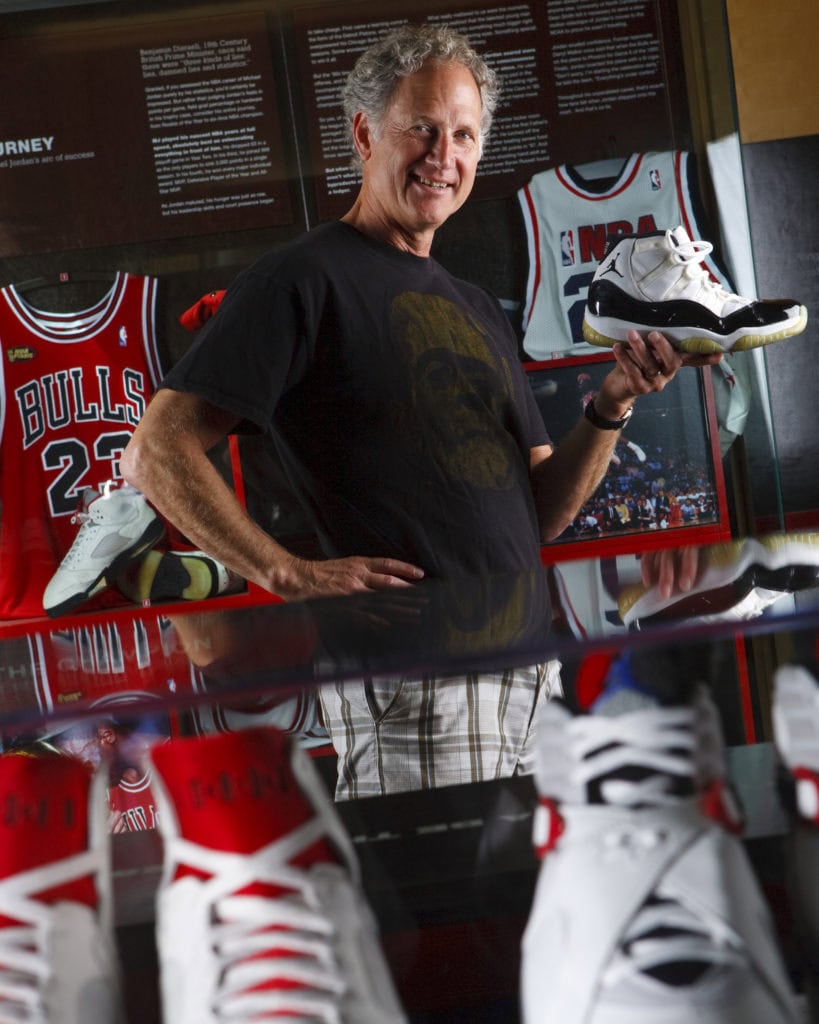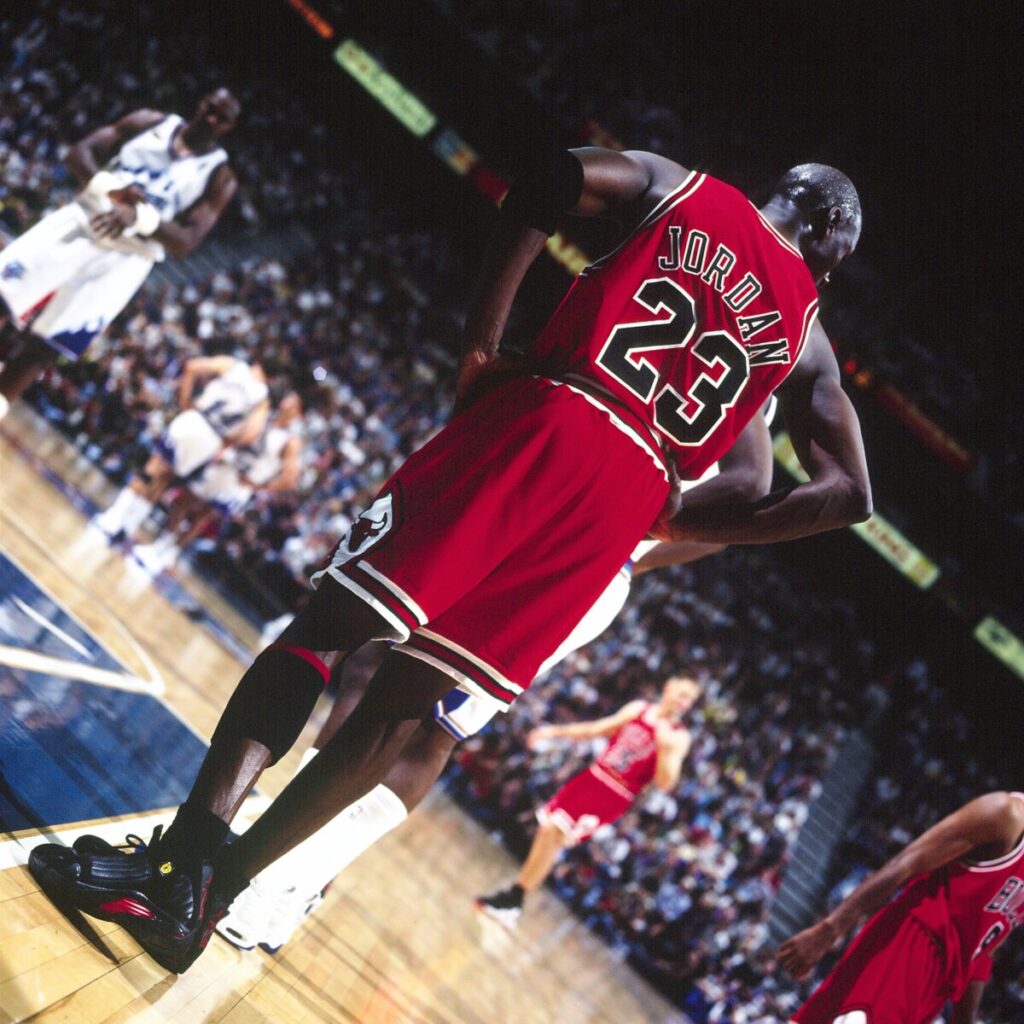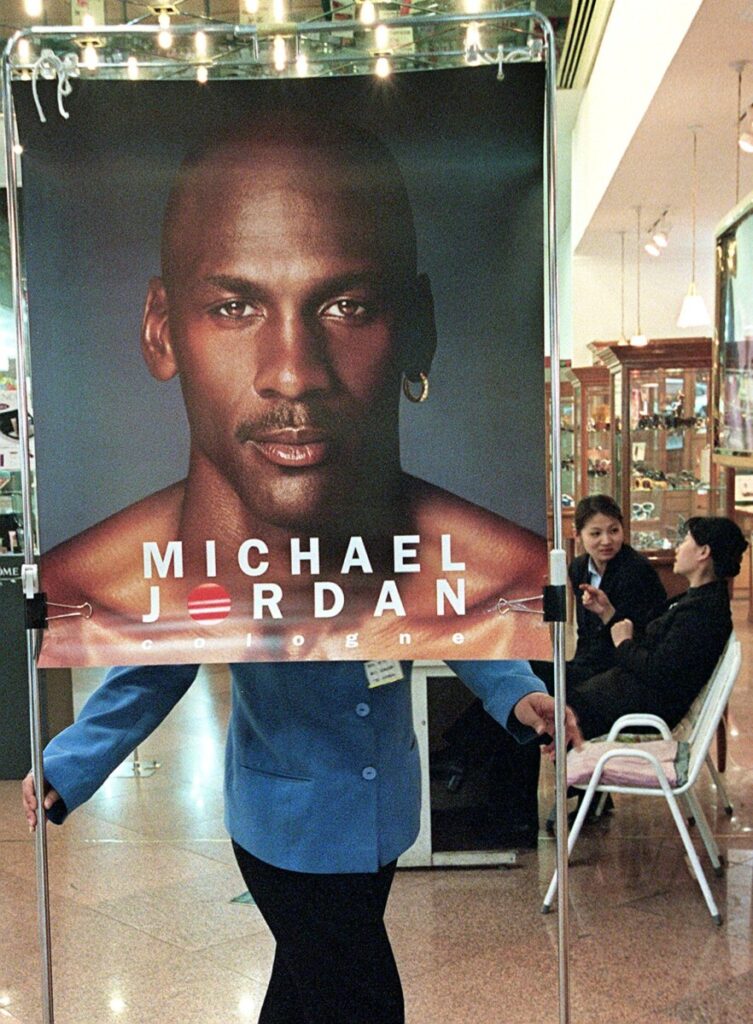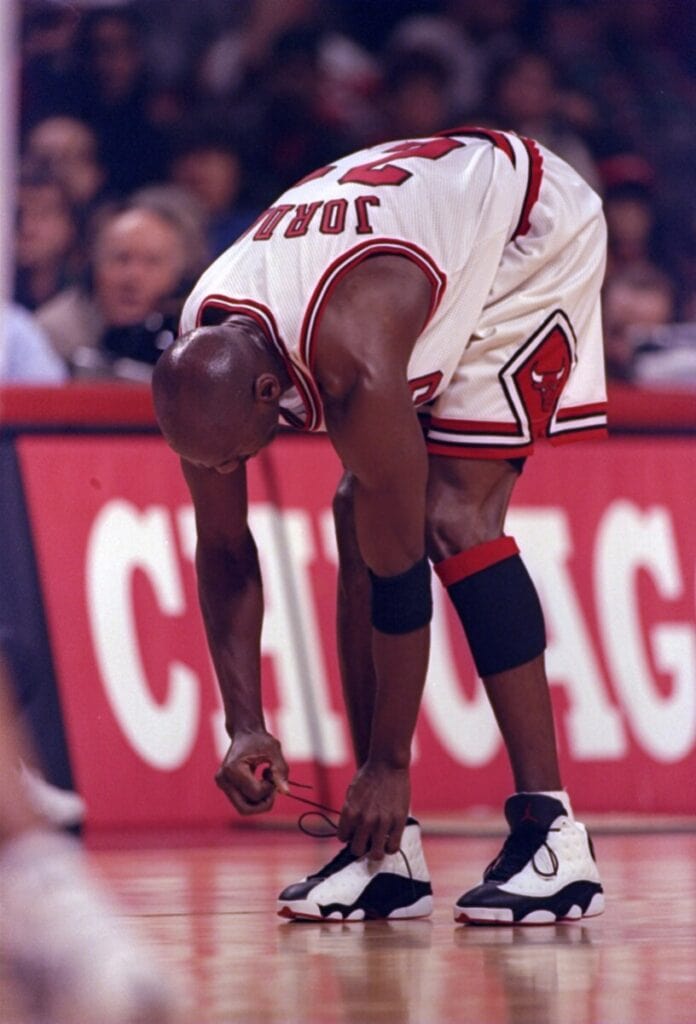Learn how Michael Jordan leveraged his worldwide cachet during his Last Dance season to launch a billion-dollar brand off the court.
Headed into the 1997-98 season, $33.1 million was enough salary to secure Michael Jordan for one more year with the Chicago Bulls.
However, when it came to capitalizing on what’s now known as the Last Dance, that $33.1 million was just the tip of the iceberg.
“Obviously Michael’s the GOAT,” legendary agent David Falk told Boardroom. “He’s an incredibly marketable individual. Whatever he touches turns to gold.”
MJ’s final season in Chicago saw more than just All-NBA honors. Jordan and Falk orchestrated a business onslaught aimed to bring Mike to new heights long after he hung up his Bulls jersey.
This branding blitz during the Last Dance season started with the birth of a billion-dollar Swoosh subsidiary and ended with a massive market share for MJ’s stake in the world’s most recognizable companies. A pitchman and a board member, CEO Jordan was firing on all cylinders.
It’s a testament to Michael’s marketing moxie, which was strategically set to full tilt in the midst of the quest for ring No. 6.
“He’s got great charisma, great fans, and great reach,” Falk said. “The challenge when you represent a player of that caliber, who’s the best in the world, is you’ve got to try to bring your game to their level. My game is business.”
From founding a footwear empire to becoming a C-suite superstar, learn how basketball’s best agent and the world’s most marketable athlete put it all on the line with the world watching.
A Businessman Becomes a Business, Man
Heading into his Last Dance, Michael Jordan was far and away the footwear world’s most marketable man.
Air Jordans reigned as the most popular shoes on the planet, accounting for $70 million in sales that year alone. With one last season in Chicago, was it time for Nike to make Mike a brand all his own?
According to Margaret Mager, then an analyst at Goldman Sachs, Nike had been consulting with outside experts for almost half a year about whether or not to make Jordan his own unique entity.
It was a radical idea, but not an entirely new one.

In 1986, the Air Jordan 2 bucked convention by baring no sidewall Swoosh. The following season, designer Tinker Hatfield introduced the Jumpman mark. By 1993, MJ’s first retirement paused, then reignited conversations on Air Jordan’s continuation and expansion.
Eventually, MJ’s former manager Howard White was able to sell Nike founder Phil Knight on the concept of a legacy line.
“It wasn’t just me,” White told Boardroom. “Tinker was on board, we brought Larry Miller on, and I knew perspective. There are so many things that are ridiculous to do, but there was a small band of people that believed.”
In the Fall of 1997, Nike announced Brand Jordan. The expectations for the MJ-led subsidiary were sky-high from the jump as analysts estimated the new empire turning $300 million in revenue by 1998.
Now its own entity, Jordan Brand extended the Jumpman logo to a world made in the image of Michael but much more ambitious in aim. Like Nike, Jordan had its own endorsers such as Eddie Jones and Ray Allen as well as its own stamped schools like Cincinnati and St. John’s.
It was an unparalleled path that only MJ could both land and lead.

“I think it’s something he deserved,” Falk said. “I think that he was singularly successful as an endorser.”
Foreshadowing the future, MJ’s line of luxury basketball apparel was introduced with the intention of crossing over into high fashion and music. The team at the newly launched Brand Jordan reached out to Interscope, enlisting R&B super-group BLACKstreet to model the new line of footwear and clothing.
The festivities took place in New York City live on the set of The Rosie O’Donnell Show, then the pinnacle of pop-culture talk television, just weeks before basketball season began. Despite the juice around the comedic host and popular music group, all eyes were on the shooting guard turned CEO.
“Every time Mike moved around there would be a thousand people following him and cameras everywhere,” Chauncey ‘Black’ Hannibal of BLACKstreet told Boardroom in 2021. “His presence is almost like Jesus is in the room. There’s something different about him. There really is.”
By aligning Jordan Brand’s introductory collection with MJ’s last season in Chicago, Mike leveraged the inordinate amount of eyeballs and media to test products and market appetite.
From press conferences to arena arrivals, All-Star events to NBA Finals games, MJ rotated his sneakers like never before. He’d practice in Team Jordan models one day before bringing out vintage Air Jordan 1s at Madison Square Garden.
With his legacy on the line at Utah, he’d try out next year’s signature shoe in the tunnel before breaking them out on basketball’s biggest stage.

“Jordan Brand has a different level of swag because we epitomize MJ,” former VP of Jordan footwear Gentry Humphrey told Boardroom in 2021. “And you know, MJ is not like the guy next door.”
Stylistically, nobody even lived in Mike’s cul de sac. In business, MJ was only like the guy next door if his neighbor was Bill Gates.
In 1998, a somewhat fiscally challenging year for Nike as a whole, Brand Jordan was the outlier, increasing in revenue by 57% and improving by 133% in year-over-year average selling price. It was a testament to how Mike could move the market with championship expectations on his back, and also provide a path for revenue once he walked away from the game.
“He’s got the Midas touch,” Falk said. “Not only is he a great basketball player and an amazing person, but he’s a very astute businessman.”
His hustle on the court for the Bulls and in the front office for his namesake clothing company was enough to make opponents sweat.
Thankfully, he had a few solutions for that.
Scent of Success
Nike, the NBA, and the city of Chicago all made billions off the back of Michael Jordan.
They were not alone. When considering the other companies aligned with MJ, it was estimated that his endorsers saw a $408 million uptick, often paying MJ anywhere from $2 to $5 million annually.
In 1990, Gatorade grew by 20% when working with Mike for the first time, exploding to $1 billion in business that same season. By the time MJ won his sixth title, Gatorade owned 80% of the sports drink market, using MJ as instant validation to expand overseas.
However, not all MJ-aligned endorsements were athlete-centric in application like Nike or Gatorade. He was also in the middle of building his next big business: Michael Jordan Cologne.
It was a move that put the baller in the beauty game, expanding his aura to new senses.
“The purpose of the cologne is to bring more awareness to men that pay attention to their hygiene,” Jordan told Keenan Ivory Wayans in 1998. “Looking good, feeling good. If you look at some of the professional athletes, they take pride in their presence.”
When it came to presence, Mike had plenty.

Just as Jordan Brand sold Mike’s high-flying silhouette as a logo on apparel, his cologne company coyly branded the shape of his shaved head on its packaging.
“When you see people,” Jordan continued, “if you don’t get to know them, your first impression is the way that they’re dressed — and the way that they smell.”
First released in 1996 alongside Space Jam, Jordan’s joint venture with Bijan Cologne came into full force a year later as the Last Dance approached. Though competitors on the court like Charles Barkley and David Robinson could endorse deodorant, no male athlete at the time was capable of collaborating on their own fragrance and assortment of beauty products.
Between department store distribution and appearances on late-night talk shows, MJ was perfectly positioning himself through fragrance as a premium brand outside of basketball. From the jump, the push behind Michael Jordan Cologne was strong with Bijan pouring in an initial $20 million in advertising.
Almost instantly, MJ’s line doubled that down payment on promotion by grossing over $40 million in sales within the first seven weeks.

Just as Jordan was battling with John Stockton and Karl Malone on the court, he was competing with Coolwater and Acqua di Gio at Macy’s.
Ahead of his last season in Chicago, the cologne component expanded into body oils, alcohol-free deodorant, shower gel, and Mike’s favorite product: an oversized bar soap tailored to his big hands. If any of that sounds silly now, the numbers above prove just how incredibly successful the endeavor initially was.
“Michael’s unique,” Falk said. “There’s no other player who compares to Michael in terms of marketability. I’m not saying there never will be, but there’s never been another player that’s enjoyed his success.”
Once again, the proof was in the pudding and the timing couldn’t have been better for Falk and MJ in a marketing sense. Right at the start of the 1998 NBA Finals, CNN reported that Michael Jordan and Bijan had amassed $155 million in sales worldwide.
That summer, the heat stayed on as the Utah Jazz took Jordan and the Bulls to six games. By the end of the 1998 NBA Finals, Michael Jordan was once again smelling like success. Even better, he was soon celebrating at Grant Park in Chicago in front of 250,000 fans.
Hiding his eyes and blocking the sun was a pair of custom Oakley shades.

Though the brand only paid Mike $500,000 to appear in ads and wear their product, they elected him as a board member and broke him off with over 200,000 shares of stock.
The unique nature of the Oakley deal — one built off a personal relationship and amplified by equity — proved the type of chess Mike was playing at this point in his career. While his long-term approach to winning in business had been fostered since his ’84 arrival, it became a public talking point during his heralded Last Dance.
“The reason I still play the game is because I still want to win,” Jordan told Wayans in 1998. “But what’s in store for Michael Jordan in a long-term situation? I enjoy doing my entrepreneurial stuff. It gives me a certain opportunity to get involved with corporate America and have a say-so in my creativity in things that are a part of my personality.”
That personality was one of a winner, the ultimate alpha male able to transcend sports, continents, and culture. It’s something that served MJ well on the hardwood but can’t be replicated simply through stat sheets.
“Marketing is a personality business,” Falk said. “It’s not how many points you score.”
In business, Michael Jordan still wanted to win even after his Chicago retirement. To this day, he’s still putting numbers on the board.
The Longtail Legacy
Today, Forbes estimates Michael Jordan’s net worth to be $2 billion.
He’s still the man as an entrepreneur, and he still’s revered as a hoop hero.
Despite DeMar DeRozan and Zach Lavine holding court in Chicago, last summer Lids listed Michael Jordan’s black and red Bulls pinstripe jersey — one Mitchell & Ness sells for $300 — as the fifth-most-popular in the Association.
Some of it has to do with the popularity of The Last Dance docuseries, while much of it has to do with the way he built his empire in the season it depicts.
The power produced by Jordan and all the equity he earned during his last days in the Windy City extends from fragrance to footwear as the modern mogul can sell shoes and teams.

When he retired from the Bulls, his entrepreneurial endeavors continued to climb. Just the same, his commercial success still soared when considering his most beloved brand partners.
“Long after he retired he still had Hanes, he still had Gatorade, he still had Nike,” Falk said. “They were very, very long-term deals. When I made the deals, I never expected he would play competitive basketball for the duration of the deals and I told that to the companies. It didn’t matter, his popularity had endured.”
Such is seen best by his namesake company, Jordan Brand.
Since launching during his Last Dance season, the Jumpman-laden Swoosh subsidiary has soared. In 2023, it’s projected to become the second-biggest shoe brand in all of America, surpassing sportswear providers that courted him back in ’84.
The success stems from MJ’s early insight to go from partners with Phil Knight to peers.
“He learned and he gleaned knowledge from people around him,” Falk said.
These days, even in roundball retirement, Michael Jordan continues to be a model athlete for brand building and the ascent from endorser to executive.
When leveraging his last season in Chicago towards a lifetime of earnings off the court, MJ and his agent were always mindful of building something strong and sustainable rather than taking every cash grab presented.
“He could have done three times as many endorsements,” Falk said. “I think whatever he touched was going to be successful. My job as the manager of the brand was to make sure we didn’t dilute it. We chose high-quality products and we didn’t do too many products.”
It’s a model Falk founded that made the most of Michael Jordan’s mass appeal while still speaking to aspiration.
“The two most successful retailers in America in the last 40 years are Neiman Marcus and Wal-Mart,” Falk said. “I always wanted to be Neiman Marcus.”
Even 25 years after hanging up his jersey in Chicago, Michael Jordan remains rich and relevant thanks to the income streams and relationships he built during basketball. When he won his sixth ring in the Windy City, few could’ve forecasted a second life in the corner office that would elicit a 10-figure net worth with much amassed a quarter-century after sinking that famed last shot.
“He was more popular when he retired than most players were at the most successful part of their active careers,” Falk said. “And still is.”